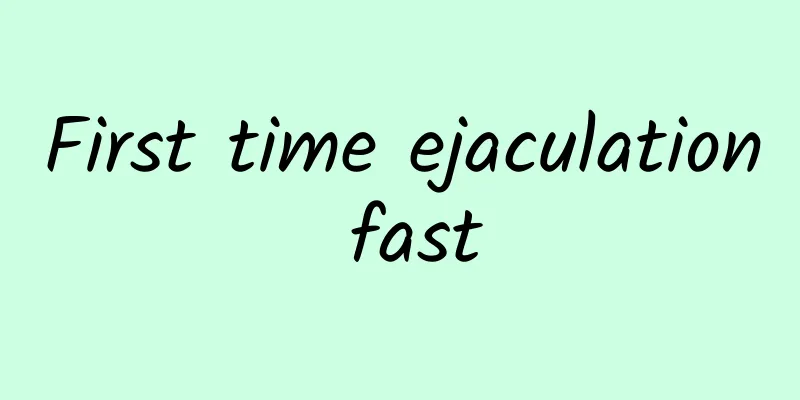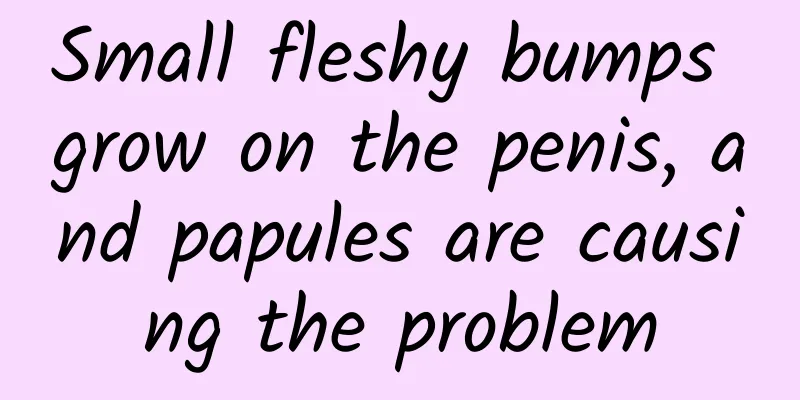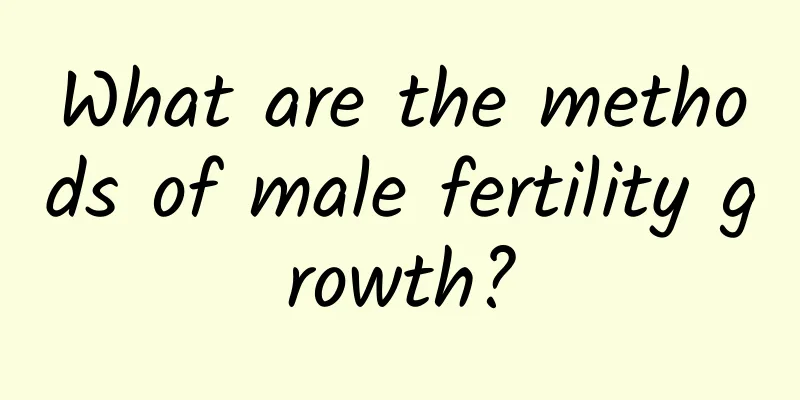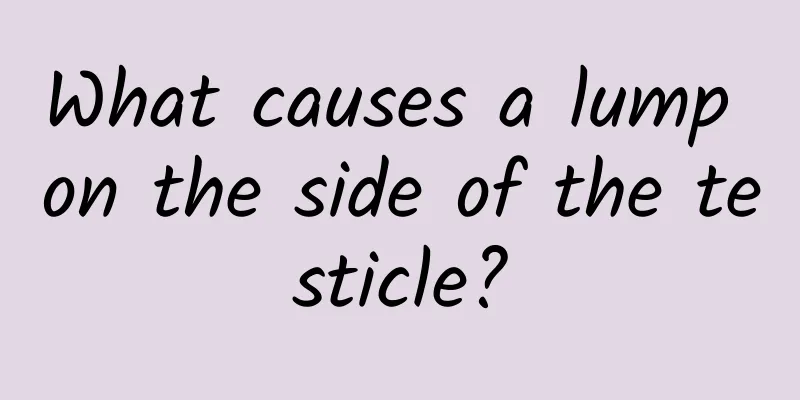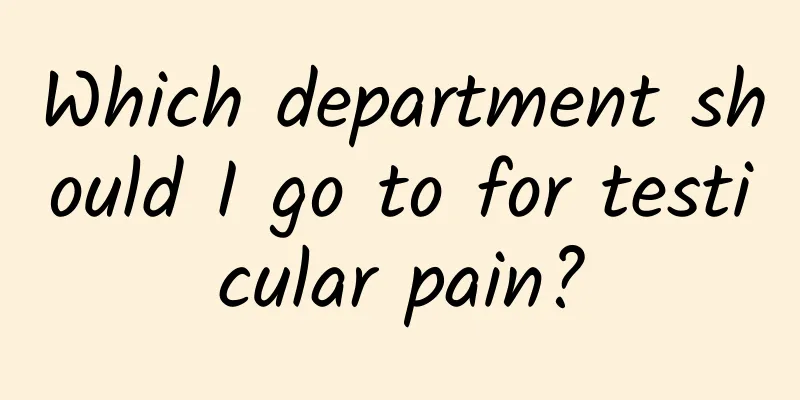What is the treatment for prostatitis?
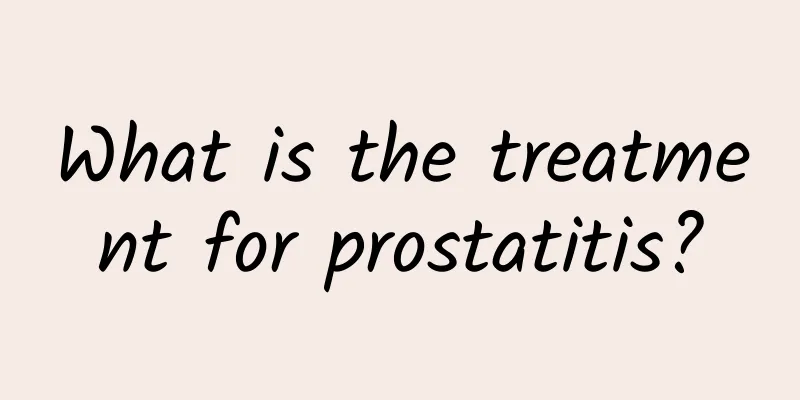
|
Men with prostatitis must pay attention to relevant taboos in their daily lives. They cannot smoke or drink, and they cannot eat spicy and irritating foods. They cannot sit for long periods of time, such as driving for a long time or sitting at a desk for a long time. They must strengthen their physical exercise, but they cannot do strenuous exercise. On the basis of these daily health care, the following methods can be used to treat prostatitis. Treatment of prostatitis: First of all, a clinical evaluation should be conducted to determine the type of disease and select treatment methods based on the cause. Misunderstanding of the disease, unnecessary anxiety and excessive abstinence will aggravate the symptoms, so the patient's mental concerns should be relieved. Prostatitis may be a disease with mild or no symptoms, a self-limiting disease that can be relieved on its own, or a disease with complex symptoms that leads to urinary tract infection, sexual dysfunction, infertility, etc. The treatment of patients should avoid over-exaggerating the harmfulness of the disease to patients, and also avoid taking a simple, negative, and blindly focused attitude towards antibiotic treatment. Individualized comprehensive treatment should be adopted. 1. Antimicrobial therapy The detection of pathogenic pathogens in prostatic fluid culture is the basis for selecting antibacterial drug treatment. If patients with non-bacterial prostatitis have signs of bacterial infection and general treatment is ineffective, they can also be appropriately treated with antibacterial drugs. When choosing antibacterial drugs, it is necessary to pay attention to the presence of a prostate-blood barrier composed of lipid membranes between the prostate acini and the microcirculation. The barrier prevents the passage of water-soluble antibiotics, greatly reducing the treatment effect. When prostate stones are present, the stones can become a shelter for bacteria. The above factors constitute the difficulty in the treatment of chronic bacterial prostatitis, which requires a longer course of treatment and is prone to recurrence. Currently, quinolone drugs such as ofloxacin or levofloxacin are recommended. If ineffective, continue to use it for 8 weeks. If recurrence occurs and the bacterial species remains unchanged, switch to preventive doses to reduce acute attacks and relieve symptoms. If long-term use of antibiotics induces serious side effects, such as pseudomembranous colitis, diarrhea, and the growth of intestinal resistant strains, the treatment plan needs to be changed. Whether non-bacterial prostatitis is suitable for treatment with antibacterial drugs is still controversial in the clinic. Patients with "aseptic" prostatitis can also use drugs that are effective against bacteria and mycoplasmas, such as quinolones, SMZ-TMP or TMP alone, used in combination with tetracycline and quinolones or used intermittently. If antibiotic treatment is ineffective and it is confirmed to be aseptic prostatitis, antibiotic treatment should be discontinued. In addition, using a double balloon catheter to block the prostatic urethra and injecting antibiotic solution from the urethral cavity back into the prostatic duct can also achieve the purpose of treatment. Type I is mainly treated with broad-spectrum antibiotics, symptomatic treatment and supportive treatment. Type II is recommended to be treated with oral antibiotics, and sensitive drugs are selected. The course of treatment is 4 to 6 weeks, during which the patient should be evaluated for the efficacy. Type III can first take oral antibiotics for 2 to 4 weeks and then evaluate the efficacy. At the same time, non-steroidal anti-inflammatory drugs, α receptor antagonists, M receptor antagonists, etc. are used to improve urination symptoms and pain. Type IV does not require treatment. 2. Anti-inflammatory and analgesic drugs Nonsteroidal anti-inflammatory drugs can improve symptoms. Generally, indomethacin is taken orally or in suppositories. Chinese medicines that use anti-inflammatory, heat-clearing, detoxifying, and hardness-softening drugs also have certain effects. Allopurinol can reduce the concentration of uric acid in the whole body and prostatic fluid. In theory, it can be used as a free radical scavenger, and it can also remove active oxygen components, reduce inflammation, and relieve pain. It is an optional auxiliary treatment method. 3. Physical therapy Prostate massage can empty the concentrated secretions in the prostate duct and drain the infection focus in the obstructed area of the gland. Therefore, for stubborn cases, prostate massage can be performed every 3 to 7 days while using antibiotics. A variety of physical factors are used for prostate physiotherapy, such as microwave, radio frequency, ultrashort wave, medium wave and hot water sitz bath, which are beneficial for relaxing the prostate, posterior urethral smooth muscle and pelvic floor muscle, enhancing antibacterial efficacy and relieving pain symptoms. 4.M receptor antagonists M receptor antagonists can be used to treat prostatitis patients with symptoms of overactive bladder, such as urgency, frequency, and nocturia, but without urinary tract obstruction. 5. α receptor antagonists Patients with prostatitis, bacterial or non-bacterial prostatitis have increased tension in the prostate, bladder neck and urethral smooth muscles. During urination, the increased intraurethral pressure causes urine to flow back into the prostate duct, which is an important cause of prostatitis, prostatic stones and bacterial prostatitis. The use of α receptor antagonists can effectively improve prostatitis and urination symptoms, help prevent urine from flowing back into the prostate, and is important for preventing recurrence of infection. It also plays an important role in the treatment of type III prostatitis. α receptor antagonists should be used for a longer course of treatment to allow enough time to adjust smooth muscle function and consolidate the therapeutic effect. Different α receptor blockers can be selected according to the patient's condition, mainly including: doxazosin, naftopidil, tamsulosin and terazosin. 6. Prostate massage and heat therapy Prostate massage is one of the traditional treatment methods. Studies have shown that proper prostate massage can promote the emptying of the prostate duct, increase local drug concentration, and thus relieve the clinical symptoms of chronic prostatitis. Heat therapy mainly uses the heat effect produced by a variety of physical means to increase blood circulation in prostate tissue, accelerate metabolism, and help to eliminate tissue edema and relieve pelvic floor muscle spasms. 7.Surgery Surgical treatment can be used for recurrent chronic bacterial prostatitis. Prostatectomy can achieve the goal of cure, but it should be used with caution. Because prostatitis usually affects the peripheral zone of the gland, transurethral resection of the prostate (TURP) is difficult to achieve the goal of treatment. TURP can remove prostate stones and bacterial infection lesions near the prostate ducts, which helps to reduce the reinfection of peripheral zone lesions. 8. Other treatments It includes biofeedback therapy, transperineal external shock wave therapy, psychotherapy, traditional Chinese medicine treatment, etc. |
<<: How to quickly relieve prostatitis pain?
>>: What is the effect of drinking alcohol on prostatitis?
Recommend
Are men's nutritional problems also related to infertility?
Daily living habits and eating habits are decisiv...
Treatment for small pimples on the glans penis
The topic of the glans penis is a sensitive topic...
What causes men's back pain?
Back pain is a very common phenomenon in our dail...
What to do if your skin becomes dry and wrinkled
In summer, due to being in an air-conditioned roo...
Reasons why men sweat when they sleep at night
I don't know if you have noticed that everyon...
Peeling of the inner foreskin
Many male friends occasionally find that their fo...
Why do men need circumcision?
If a boy has abnormal male reproductive organ dis...
What is normal testosterone level?
The male reproductive organs include many element...
How long does it take for a man to be considered premature ejaculation?
Premature ejaculation is a common male ailment. I...
What is testicular vaginal reversal surgery?
Testicular vaginal reversal is a method of treati...
What medicine can make a man get hard immediately after taking it?
Sex is an indispensable part of people's dail...
One-week weight loss plan for boys
The current living standards and a variety of die...
Quick tips for men's whitening method
There are many ways to whiten your skin. You can ...
What are the symptoms of garlic allergy and who should not eat garlic?
We all know that garlic is not only a good season...
What are some weight loss and fitness methods for men?
Nowadays, many male friends lose their body shape...


